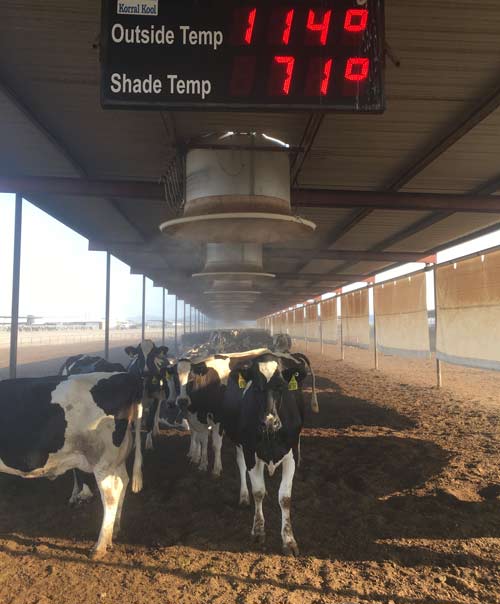A Cow’s Tale
The Care and Keeping of CowsCow Care
Treating animals with respect and compassion to maintain a healthy and comfortable herd of cows is top priority for our dairy farmers.
“You can’t be a dairy farmer and not love these animals. From the time they are born, the care and attention of our cows is constant.”
Meet Our Cows
AZ farmers milk two breeds of cow:

Jerseys
The class clowns of the milking world, Jerseys are very curious and usually cause mischief on the dairy. Their milk produces the highest butterfat and protein which makes their milk great for making cheese.

Holsteins
Considered the high-performance athletes of the milking world, Holsteins are the most popular dairy breed worldwide.
Nourished Noshing
The Cow’s Tale includes ensuring optimal milk quality. To do that, professional cow nutritionists work with farmers to develop balanced diets that contain good sources of protein, fat, fiber, vitamins and minerals from feed mixtures that include grasses, alfalfa, cottonseed, corn, and almond hulls. Nutrient ratios and amounts are formulated for cows based on where they are in their lifecycle. Equally important is hydration. Cows can drink anywhere from 25-50 gallons a day, so access to clean water is available 24 hours a day.

Comfort and Joy!
To keep cows cool and comfortable in the AZ heat, farms are equipped with large fans, misters and plenty of shade. Corrals are groomed 2-3 times a day to remove any existing damp bedding, while pulling in soft, dry bedding, which cows love to lay on! Speaking of grooming, farmers make sure to keep their cows’ hooves trimmed, known on the farm as a “cow pedicure.”
Herd Health
Regular veterinarian check-ups ensure a healthy herd. Just like us, cows sometimes get sick and occasionally need antibiotics to restore their health. While a cow is being treated with antibiotics, she is isolated in a separate pen and her milk is disposed of. Strict systems are in place, including rigorous testing both on the farm and at the processing plant, to ensure that milk is antibiotic-free and never enters the food supply.
National Dairy FARM Program
Arizona dairy farmers actively participate in the National Dairy FARM® program and are FARM® certified. The National Dairy FARM Program™ is a nationwide, verifiable animal well-being program that brings consistency and uniformity to on-farm animal care and production practices.
FAQs
Q: Are the cows locked up on the farm all day?
A: No, cows are not locked up all day on dairy farms. A little known part of the Cow’s Tale is that Cow’s have quite a bit of freedom on the farm. They live in gated pens that give them a lot of room to roam, relax, and eat. Sometimes, when they are eating, the stanchions will lock into place, which gives farmers and veterinarians the opportunity to give vaccinations, check their health, and breeding. This method is very low stress on the cows because they are already at the stanchion enjoying their food.
Do your cows suffer from any trauma that could affect the milk quality?
For cows to make the best milk, they need to be healthy and in a comfortable, low stress environment. Dairy farmers avoid any high-stress situations, feed cows a healthy diet, and keep their environment clean to ensure their cows are making high quality milk. If a cow gets sick or injured, they would be moved to the ‘hospital pen’ where employees can keep a close eye on them and give them the proper treatment to get better. If a cow does need to receive antibiotics, her milk would be kept out of the milk supply until she is fully clear of the antibiotics in her system. Each load of milk that leaves a dairy farm is tested for antibiotics and if it were to test positive, would be dumped and the farmers would be fined and penalized.
What is your reproduction process of your animals?
Cows are bred and have their first calf around 2 years of age. They will start giving milk and then be bred again after 2-3 months. This ensures that they are healthy and ready to carry another calf. The cow will continue to give milk until she is ‘dried off’ (goes on vacation). The dry period lasts for 90 days until she has her calf. Then the process starts over.
It’s important to note that in the wild, a bull would attempt to breed with a cow much earlier than the 2-3 months a farmer waits.
What happen to the male calves when they are born?
Male calves are often sold from the dairy, sometimes even given away depending on the market.

